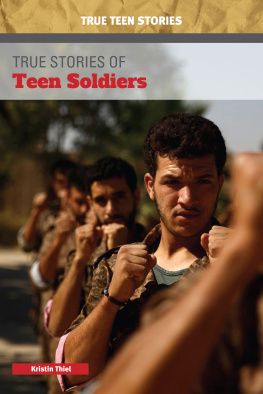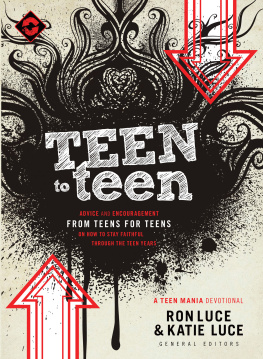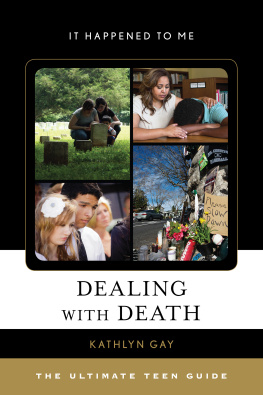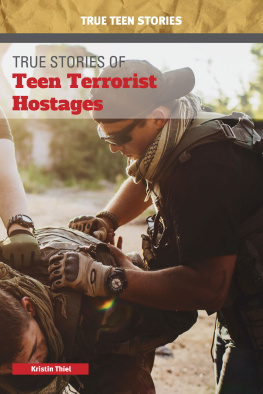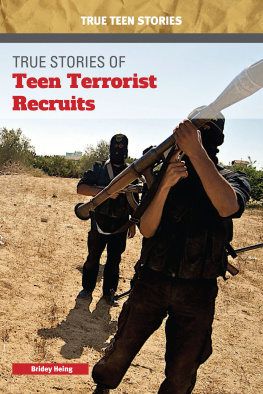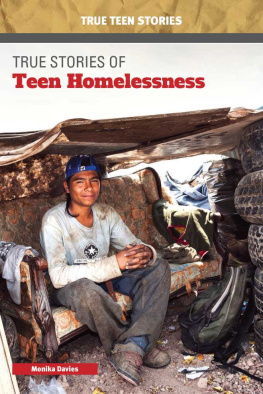Published in 2018 by Cavendish Square Publishing, LLC 243 5 th Avenue, Suite 136, New York, NY 10016
Copyright 2018 by Cavendish Square Publishing, LLC First Edition
No part of this publication may be reproduced, stored in a retrieval system, or transmitted in any form or by any meanselectronic, mechanical, photocopying, recording, or otherwisewithout the prior permission of the copyright owner. Request for permission should be addressed to Permissions, Cavendish Square Publishing, 243 5th Avenue,
Suite 136, New York, NY 10016. Tel (877) 980-4450; fax (877) 980-4454.
Website: cavendishsq.com
This publication represents the opinions and views of the author based on his or her personal experience, knowledge, and research. The information in this book serves as a general guide only. The author and publisher have used their best efforts in preparing this book and disclaim liability rising directly or indirectly from the use and application of this book.
All websites were available and accurate when this book was sent to press.
Library of Congress Cataloging-in-Publication Data
Names: Thiel, Kristin, 1977- author.
Title: True stories of teen soldiers / Kristin Thiel.
Description: New York : Cavendish Square Publishing, [2018] | Series:
True teen stories | Includes bibliographical references and index.
Identifiers: LCCN 2017016316 (print) | LCCN 2017023739 (ebook) | ISBN 9781502631657 (E-book) | ISBN 9781502631640 (library bound)
Subjects: LCSH: Child soldiers--Juvenile literature. | Teenagers--Social conditions--Juvenile literature. | Children and war--Juvenile literature.
Classification: LCC UB416 (ebook) | LCC UB416 .T78 2018 (print) | DDC 355.0092/535--dc23 LC record available at https://lccn.loc.gov/2017016316
Editorial Director: David McNamara Editor: Caitlyn Miller Copy Editor: Alex Tessman
Associate Art Director: Amy Greenan Designer: Seth Hughes Production Coordinator: Karol Szymczuk Photo Research: J8 Media
The photographs in this book are used by permission and through the courtesy of:
Cover, ABD DOUMANY/AFP/Getty Images; p. 4 Ben Davies/LightRocket via Getty Images; p. 8 Samir Bol/Anadolu Agency/Getty Images; p. 10, 64 Thierry Falise/LightRocket via Getty Images; p. 16 Monika Skolimowska/picturealliance/dpa/AP Images; p. 18, 19 Cvijovic Zarko/Shutterstock.com;
p. 21 Kaveh Kazemi/Getty Images; p. 24 Christophe Calais/Corbis via Getty Images; p. 26 Tannis Toohey/Toronto Star via Getty Images; p. 27 Hulton-Deutsch Collection/CORBIS/Corbis via Getty Images; p. 31 DESIREY MINKOH/AFP/Getty Images; p. 35 Mohammed Elshamy/Anadolu Agency/ Getty Images; p. 38 Ami Vitale/Getty Images; p. 41,74 Peter Hermes Furian/Shutterstock.com; p. 43 ISSOUF SANOGO/AFP/Getty Images; p. 47 Jurgen Zimmerer, Joachim Zeller and E. J. Neather, Merlin Press/Wikimedia Commons/File:Zimmerer+Zeller Genocide in GSWA p.47.jpg; p. 48 Brian Lawdermilk/NASCAR via Getty Images; p. 50 Sarah Beth Glicksteen/The Christian Science Monitor/Getty Images; p. 53 MPI/Getty Images; p. 56 http://www.americasarmy.com/ , http://www . goarmy.com//Wikimedia Commons/File:AA2GameCover.jpg; p. 61 Hmreetz/Wikimedia Commons/ File:Basic training graduation.jpg; p. 62 NE studip/Shutterstock.com; p. 69 AHMAD AL-RUBAYE/ AFP/Getty Images; p. 76 Jason Bleibtreu/Sygma/Sygma via Getty Images; p. 79 Taha AL-Rubayyh/ Getty Images; p. 80 Roger Lemoyne/Getty Images; p. 86 Mark Renders/Getty Images; p. 88 Monkey Business Images/Shutterstock.com; p. 89 Nancy Kennedy/Shutterstock.com; p. 92 Patrick Robert/ Sygma/CORBIS/Sygma via Getty Images; p. 95 Don Bartletti/Los Angeles Times via Getty Images.
Contents

A young Karen National Liberation Army soldier stands guard along the Myanmar/Thailand border.
T he use of teen soldiers around the worldfrom the Americas to African nations, from Asian islands to the island of the United Kingdomcan be a serious problem. The geographical reach is wide, the number involved is high, and the negative short-term and long-term effects for teens in bad situations is powerful.
Teen soldiers are not found only in faraway lands; they are also living next door. Even youth living in many developed, wealthy nations are allowed into the military. Many of those young people come from communities and families without a lot of resources. For a child in a small rural town or a deep inner city, with poor education, few job prospects, and facing other instabilities, the military can sound glamorous. Recruiters may emphasize the travel, the chance for a paid education, and the career opportunities. Many teens find all those things, but they also might have to survive in extreme situations, bound by regulations that prevent them from quitting for several years.
Likely hundreds of thousands of people who are eighteen or younger are part of an armed force, either one run by their country or one acting outside the governments control. Participating in the military at too young an age can disrupt physical and mental development and negatively affect overall health and well-being. This can be the case for those recruited by the military and those who seek enlistment, in addition to those who are forced into armed service. Boys and girls who pick up a weapon and fight and those who participate in military organizations in other ways are all vulnerable to abuse, trauma, and other ill effects.
The risk of injury or even death at the hand of the enemy is one concern. Physical threats can also come from fellow soldiersbullying and other forms of physical violence are not unusual in the military. Even if a teen is not on the front line , his or her physical safety is at risk. For example, in October 2014, UNICEF reported that forces in the Central African Republic (CAR) brutally killed two children merely accused of spying for the opposing side. In other cases, teen soldiers who are porters carry loads way too heavy for them and may do so through forests, barefoot, for up to 25 miles (40.2 kilometers) in one journey, as a soldier from the Democratic Republic of the Congo (DRC) reported to the New York Times in 1999.
Even if a person escapes, completes, or otherwise leaves military service in a physically sound state after serving as a teen, he or she could suffer psychological problems and stunted social development. Military training breaks down independent thought so that cadets do not question the commands given them, which is important in the chaos of battle when quick action may save lives. But this kind of training of a still-developing brain can alter a personality permanently.
Also, a teen soldier may have witnessed or participated in atrocities such as hurting or killing others, sights that are some of the most traumatic a person can absorb. One ex-child soldier in the Central African Republic, Jean, told the nongovernmental rights and aid organization Save the Children, You see people killing people, you see dead people. Its not good, because youre still a child, your mind is not yet solid and you look at things like that. And because the risk of child sexual abuse is higher within the military than outside it, a young soldier may have to live with the trauma of experiencing or witnessing that as well. Girls who serve are at particular risk.

